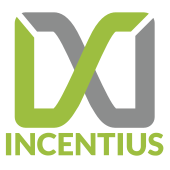Sales Commissions – Tiered, Incremental, Retroactive – What do they mean? Amit Jain May 21, 2014
Commissions on sales are the simplest and perhaps the oldest form of incentives. Sales commission plans are generally easier to communicate to salespeople and, at times, have a greater impact on salesperson behavior due to their simplicity. They are more prevalent in cases where sales goals are difficult to define, either due to uncertainty in the market or due to the business being new or in an indirect/agent-based sales channel. These types of plans are also common in situations where an organization wants to reward total unit or dollar volume and believes that all individual reps have equal earning potential.
Straight sales commission plans are easy to administer, but at times sales commission plans need to be tweaked to help ensure that salesperson behavior is aligned with organizational goals. It becomes more critical in instances when a salesperson has much more control over price negotiations or the organization would like to focus on sales growth. This post will discuss the different variations of commission-based plans that companies employ to ensure that salesperson behavior conforms to their business objectives.
The simple sales commission plan
This is the simplest type of plan in which a flat commission dollar value is paid per unit sale. However, the unit of measurement for which the commission is paid may depend on the company’s objectives. More often than not, the flat commission may be paid per dollar of revenue sold by the salesperson or per widget sold.
The tiered sales commission plan
In such a plan, the commission paid increases progressively with the sales unit of measurement. Figure 1 shows an example of a tiered sales commission plan. The increase in commission may be of two types depending on whether the increased commission applies to all revenue or only the marginal revenue which falls in that higher tier :
- Retroactive Commission: Here, the increased commission rate achieved by breaching higher tiers is applied to all revenue, leading to a sharp increase in total commission as a rep crosses a certain threshold. For example, in figure 1, if the rep makes $9999, he would be paid a commission of 10% X $9999. However, if his revenue increases to $10000 and the plan is retroactive, his commission would sharply increase to 15% X $10000 which is effectively a 50% jump in commissions.
- Incremental Commission: In such a sales commission plan, the increased commission is applied to only the incremental revenue which lies in the higher tier. So, in the example above, the revenue of $10000 would yield $999910% + $115% as commission which is effectively an incremental increase in total commission.
 Figure 1
Figure 1
The commission table above has sales revenue as a basis. However, other metrics (such as the net profitability of products sold) may determine the tier in which the replies are. Here is a list of commonly used metrics by companies to determine the commission tier:
- Profitability: Selling more profitable products means a higher commission rate.
- Contract Length: This is normally used in industries where recurring payments are made by the client. For example, companies that sell SAAS contracts receive periodic payments from clients and hence would like to incentivize their sales team to sell software for a longer contract term. Tiers are determined on the basis of contract length, and the higher the term, the higher would be the commission rate.
- Sales Revenue
- Sales Volume/Number of Widgets
- Custom defined: Sometimes, companies define custom parameters to determine the commission rate. This is generally used to direct sales behavior when the reps sell a large portfolio of products. An example is given below – A company has 4 products (see table 1) that differ in pricing. Now, the company wants to implement a commission-based plan in which the commission rate would be applied to net revenue. The company also wants to promote two products – gas-based and diesel gen-sets because of their higher profitability. To implement this, the company can assign a custom parameter called ‘points’ to each of its products which would determine the commission rate tiers (see table 2). Hence reps are incentivized to sell diesel and gas-based gensets in greater volumes to help them to achieve higher commission rates. Effectively their behavior is tuned towards not only selling more but also selling the products that the company wants them to push more.
Table 1 Product Price Points Electric Motors $ 1,250 1 Diesel Gensets $ 3,000 2 Transformers $ 4,200 1 Gas-based gen-sets $ 2,800 2 Table 2 Units Commission 5 – 10 10% 10 – 15 12% 15 – 20 14% 20 – 30 16% 30 + 18% Commission over quota plan
Sometimes commission-based plans and quota achievement plans are mixed to build a hybrid plan. In this, a target is set, and reps are paid on the basis of their % target achievement until they reach 100%. Post 100%, in addition to their target incentive, they are paid a fixed percentage as a commission on the extra sales they make above their target quota. These types of plans are commonly used in the pharmaceutical sector.
Performance metrics for sales commission plans should always be chosen based on desired business objectives, and appropriate safeguards should be introduced to accomplish the end result without being financially irresponsible.
Would you like to get a sample sales commission plan analysis for your company? Please email us at info@incentius.com
And if you got this far, we think you’d like our future blog content, too. Please subscribe on the right side of Incentius.


